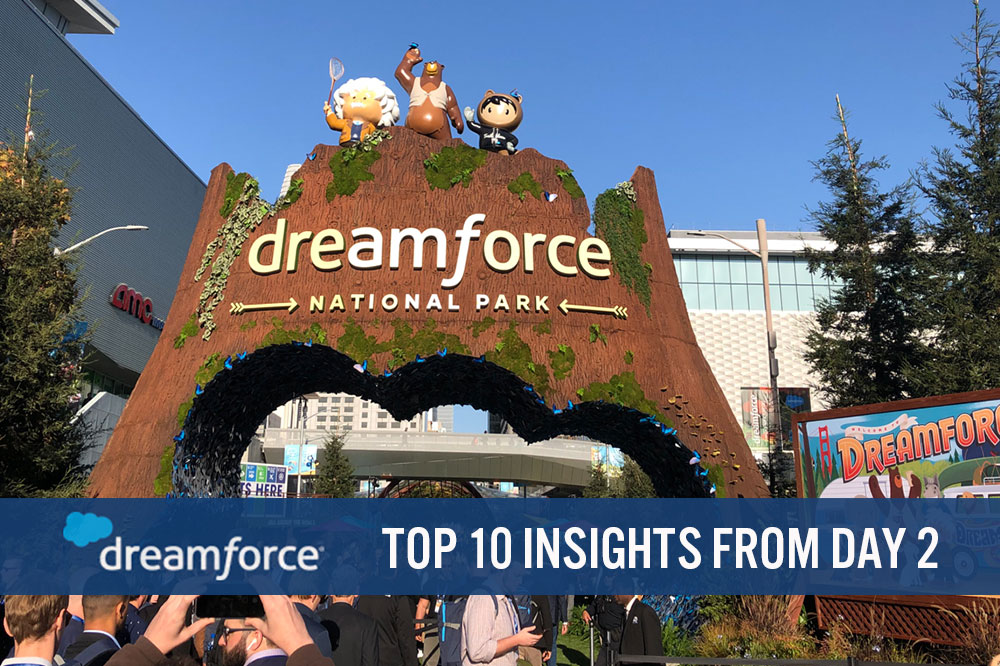
DIpil Das
1) Commerce Cloud is transforming commerce globally, with more than 1 billion visitors.
Commerce Cloud is currently running on 4,200 live sites in 84 countries, with more than 1 billion global visitors expected in November 2019 (40% year-over-year growth). Salesforce’s technology has transformed commerce for customers worldwide: Clothing retailer Madewell saw 40% of sales from digital channels; Frito-Lay saw 33.5 million customers using its Snacks To You portal; and Hibbett Sports saw a 10% increase in order value using Einstein AI.
[caption id="attachment_100289" align="aligncenter" width="700"]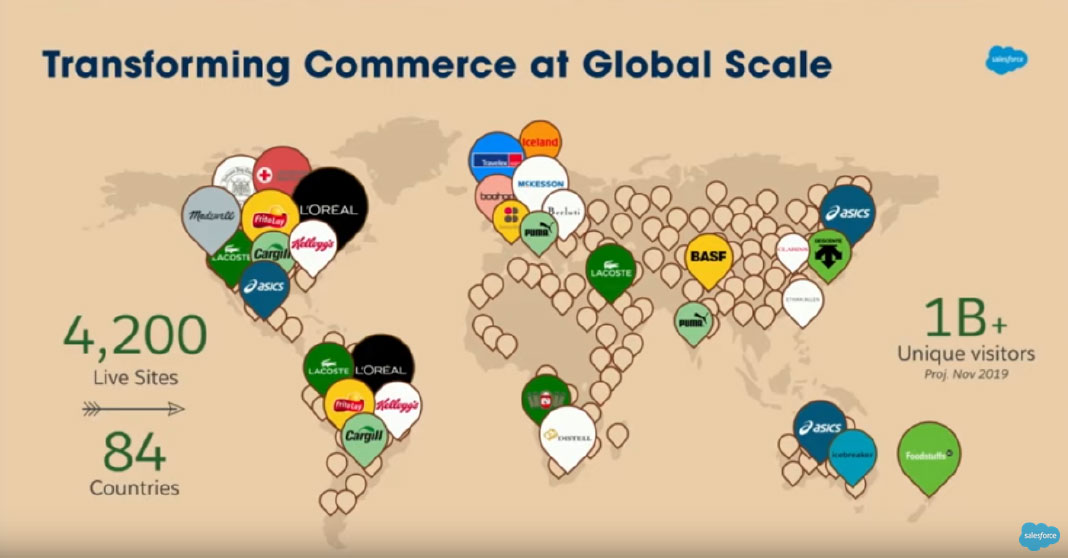 Commerce Cloud’s global reach
Commerce Cloud’s global reach
Source: Company reports [/caption] 2) Commerce Cloud offers “clicks to code,” which spans a breadth of offerings from standard templates to custom-programmed commerce sites. Commerce Storefront Templates are a reference architecture for customers that can be modified and customized via a graphical user interface, i.e., “clicks.” For commerce-site operators who prefer to write code, Salesforce offers tools for developers to write customized code. The company calls this offering “clicks to code.” [caption id="attachment_100290" align="aligncenter" width="700"]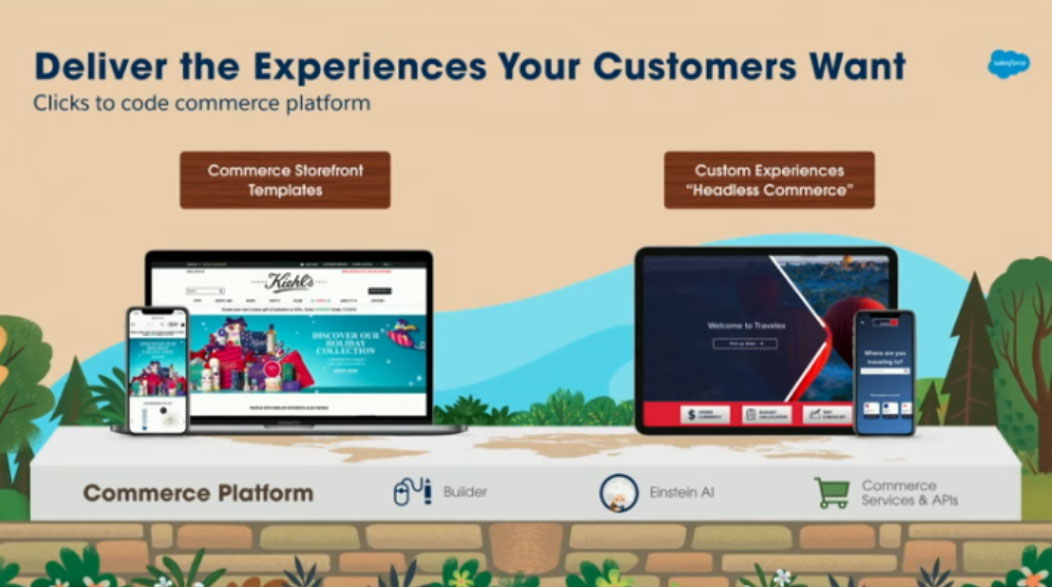 Salesforce Clicks to Code Platform
Salesforce Clicks to Code Platform
Source: Company reports [/caption] 3) New Einstein AI features include product recommendations to “complete the set.” The Einstein AI platform includes a function called “complete the set,” which makes complementary product recommendations. This feature can be added by dragging and dropping it onto an e-commerce webpage. Kiehl’s demonstrated this functionality on its website—when a shopper adds a personal care product to their digital cart, the AI suggests the remaining items in the set, to “complete the routine.” [caption id="attachment_100291" align="aligncenter" width="700"]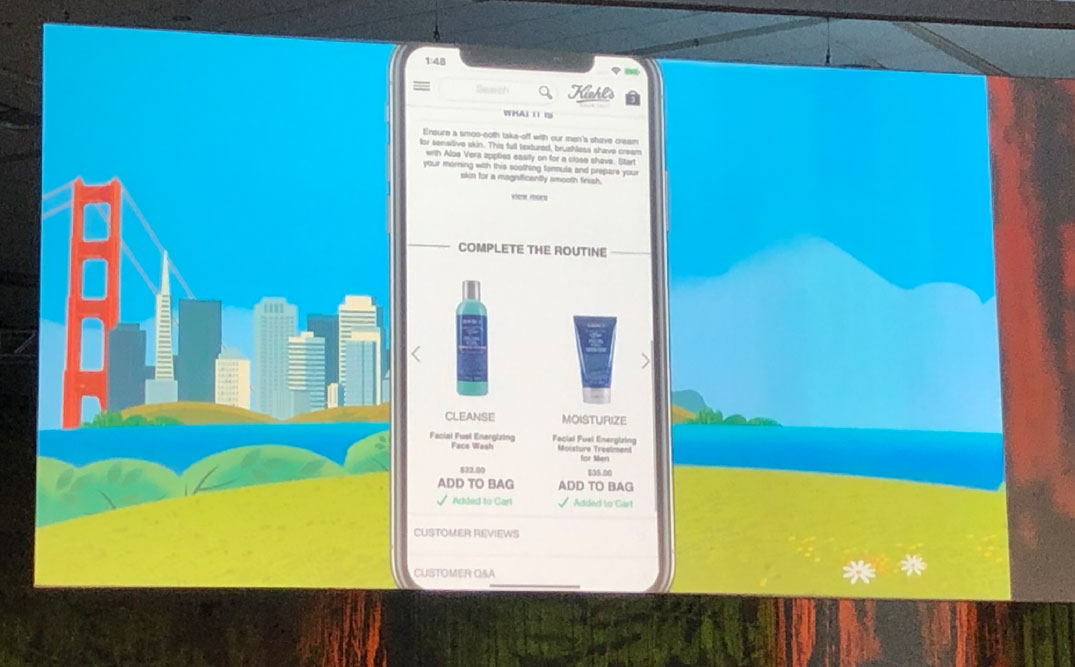 Kiehl’s “Complete the Routine”
Kiehl’s “Complete the Routine”
Source: Coresight Research [/caption] 4) Headless commerce provides flexibility and customization opportunities. Headless commerce refers to a separation of the front end from the back end of an e-commerce application, in which each operates independently so that changes on one end do not require reciprocal changes on the other. The two applications communicate with one another through application programming interfaces or tools such as Salesforce’s MuleSoft. Travelex demonstrated its headless commerce platform (which combines regulatory requirements with commerce), through which travelers can order foreign currency on a web browser or an app and have it delivered to their home or office, or pick it up at the airport. [caption id="attachment_100292" align="aligncenter" width="700"]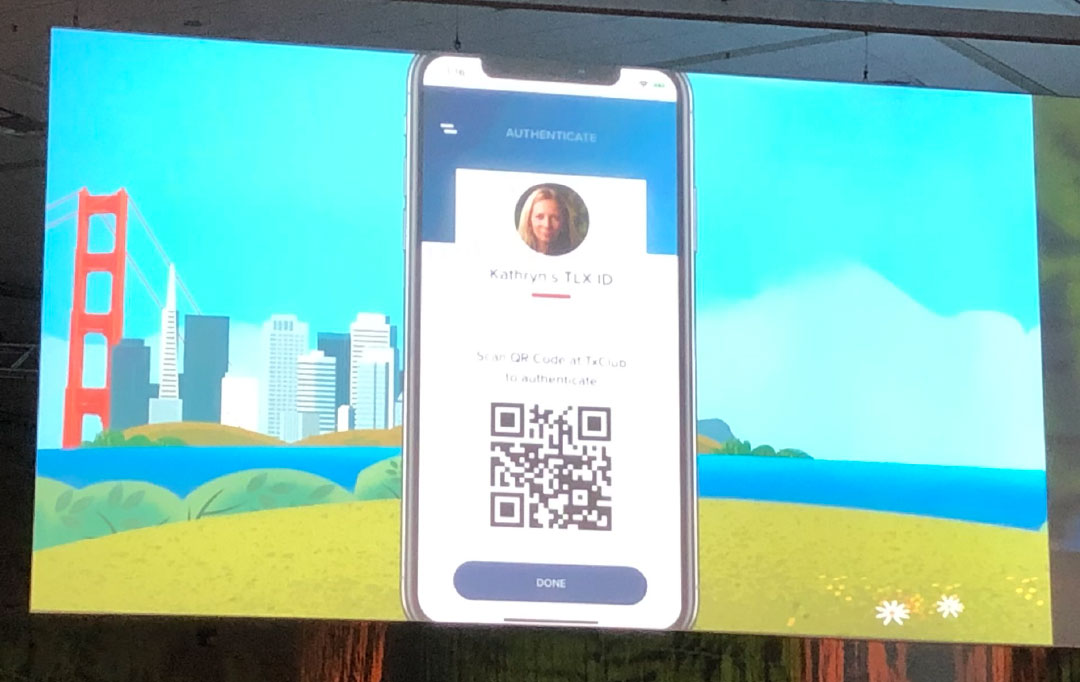 Travelex QR code for currency pickup
Travelex QR code for currency pickup
Source: Coresight Research [/caption] 5) B2B apps can be aesthetically pleasing and offer similar functionality as consumer apps. The Commerce Cloud keynote featured a demonstration of the Kellogg’s app for grocery store owners, which has similar functionality to a consumer e-commerce app. Grocers are able to shop for products, place and monitor orders and respond to promotions. Consumer packaged goods companies can monitor and optimize inventory pictograms by asking retailers to upload a photograph of relevant shelf sections. [caption id="attachment_100293" align="aligncenter" width="700"]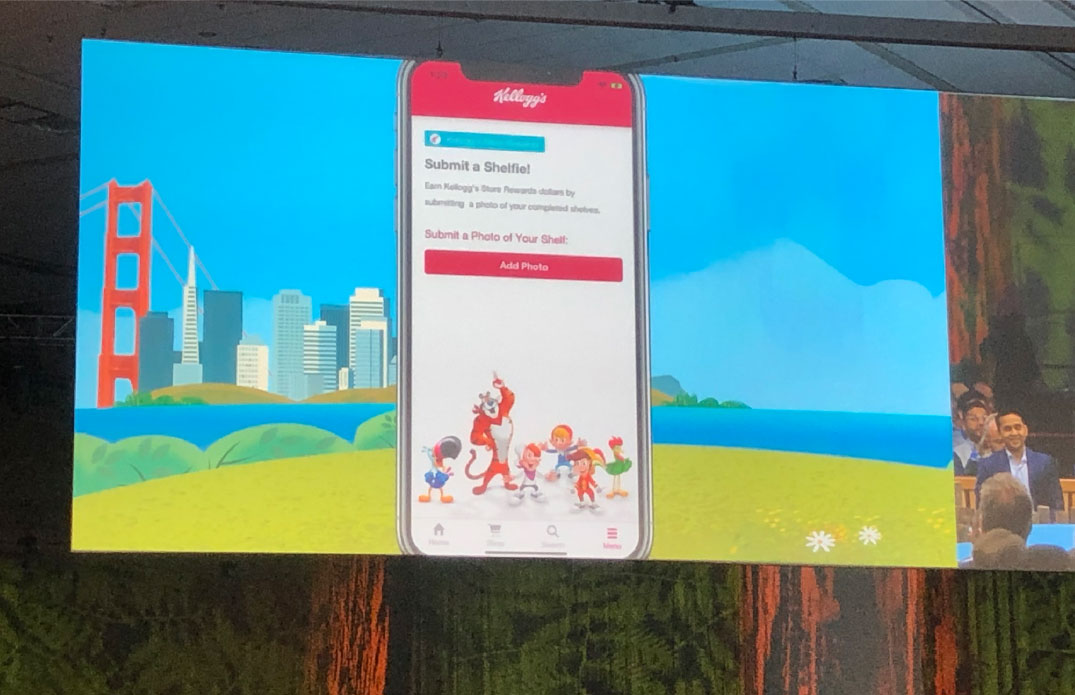 B2B app requesting a “shelfie”
B2B app requesting a “shelfie”
Source: Coresight Research [/caption] 6) B2B shopping apps can use gamification, just like consumer apps. The Kellogg’s app demonstrates many of the marketing technologies employed in consumer apps, such as personalized product displays and promotions. Apps can also use gamification—technology initially used in video games—which enables interactive rewards features such as points and levels, in order to entice B2B customers to make additional purchases. [caption id="attachment_100294" align="aligncenter" width="700"]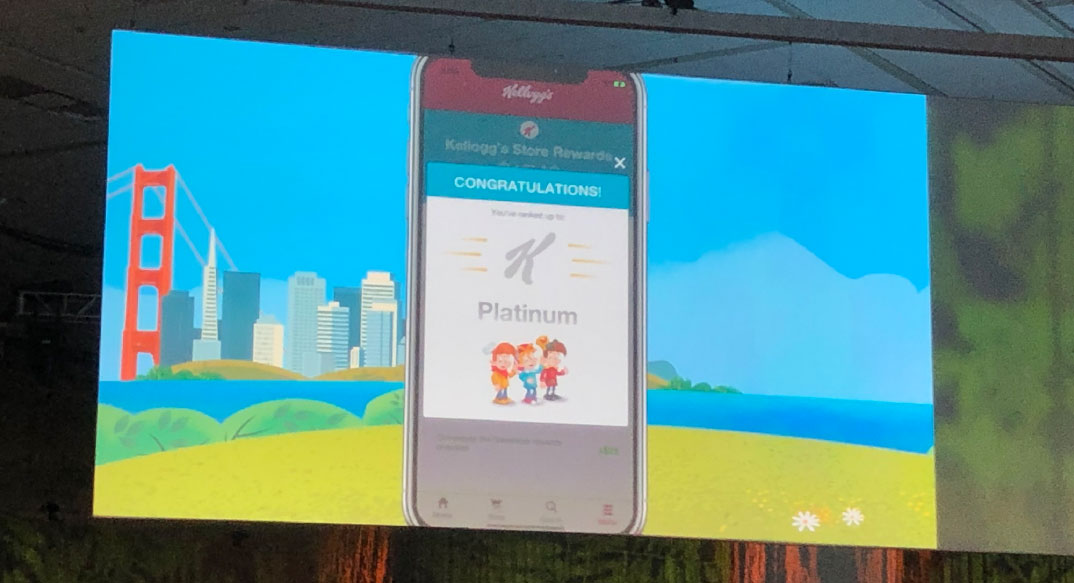 B2B gamification
B2B gamification
Source: Coresight Research [/caption] 7) L’Oréal is using AI to achieve its goal of becoming the world’s first beauty tech company. L’Oréal is using Salesforce to make it easier for consumers around the world to discover, share and buy beauty products online, by offering a cohesive, end-to-end shopping journey that is unique to each and every customer. AI enables predictive and relevant product messaging, recommendations and offers across e-commerce, marketing, social media and more. [caption id="attachment_100295" align="aligncenter" width="700"]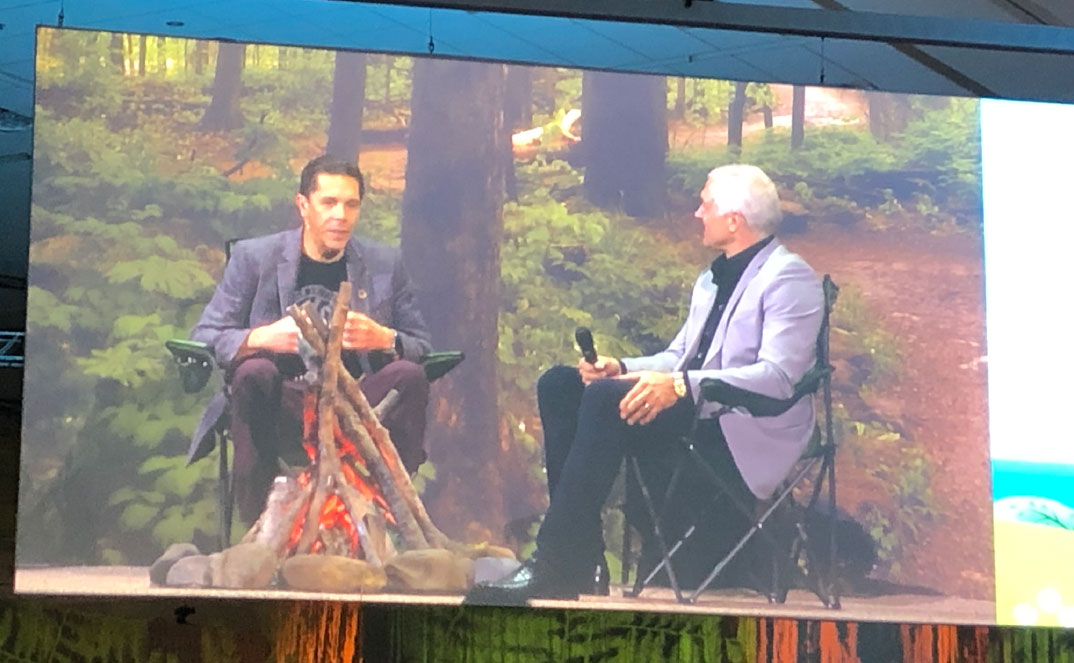 Michael Kingston, CIO of L’Oréal USA
Michael Kingston, CIO of L’Oréal USA
Source: Coresight Research [/caption] 8) Order management moves into the 21st century. Salesforce also announced a new e-commerce order management system—five years in the making—created on Salesforce’s Lightning platform. The new system can replace several legacy systems and provides a missing piece that integrates with other apps in the Salesforce ecosystem. 9) Sales Cloud helps Southwest Airlines make its systems more accessible for workers. The Bureau of Internet Accessibility estimates that 25% of US adults (61 million people) have a disability, rising to 40% for those aged 65 or older. In Southwest Airlines’ customer-service contact centers, roughly one in 10 employees use accessibility tools. Salesforce’s Service Cloud interacts with screen readers and offers a robust set of keyboard shortcuts and high-color contrast to help visually impaired customer-service representatives use its Lightning Service Console. 10) Lamborghini is using Salesforce Blockchain to authenticate heritage vehicles. When a Lamborghini vehicle is resold, the automobile company conducts 800 to 1,000 certification checks at its headquarters, examining photographs, auction houses, dealerships, repair shops, newspapers, magazines and other media sources to verify all of the parts and service of each vehicle. Salesforce Blockchain enables Lamborghini to digitize its authentication process and create a trust network among technicians, repair shops, dealerships and more that facilitates a certified record of service, including restoration and prior ownership. The inherent security of blockchain prevents counterfeiting and protects the value of the vehicle.
 Commerce Cloud’s global reach
Commerce Cloud’s global reach Source: Company reports [/caption] 2) Commerce Cloud offers “clicks to code,” which spans a breadth of offerings from standard templates to custom-programmed commerce sites. Commerce Storefront Templates are a reference architecture for customers that can be modified and customized via a graphical user interface, i.e., “clicks.” For commerce-site operators who prefer to write code, Salesforce offers tools for developers to write customized code. The company calls this offering “clicks to code.” [caption id="attachment_100290" align="aligncenter" width="700"]
 Salesforce Clicks to Code Platform
Salesforce Clicks to Code Platform Source: Company reports [/caption] 3) New Einstein AI features include product recommendations to “complete the set.” The Einstein AI platform includes a function called “complete the set,” which makes complementary product recommendations. This feature can be added by dragging and dropping it onto an e-commerce webpage. Kiehl’s demonstrated this functionality on its website—when a shopper adds a personal care product to their digital cart, the AI suggests the remaining items in the set, to “complete the routine.” [caption id="attachment_100291" align="aligncenter" width="700"]
 Kiehl’s “Complete the Routine”
Kiehl’s “Complete the Routine” Source: Coresight Research [/caption] 4) Headless commerce provides flexibility and customization opportunities. Headless commerce refers to a separation of the front end from the back end of an e-commerce application, in which each operates independently so that changes on one end do not require reciprocal changes on the other. The two applications communicate with one another through application programming interfaces or tools such as Salesforce’s MuleSoft. Travelex demonstrated its headless commerce platform (which combines regulatory requirements with commerce), through which travelers can order foreign currency on a web browser or an app and have it delivered to their home or office, or pick it up at the airport. [caption id="attachment_100292" align="aligncenter" width="700"]
 Travelex QR code for currency pickup
Travelex QR code for currency pickup Source: Coresight Research [/caption] 5) B2B apps can be aesthetically pleasing and offer similar functionality as consumer apps. The Commerce Cloud keynote featured a demonstration of the Kellogg’s app for grocery store owners, which has similar functionality to a consumer e-commerce app. Grocers are able to shop for products, place and monitor orders and respond to promotions. Consumer packaged goods companies can monitor and optimize inventory pictograms by asking retailers to upload a photograph of relevant shelf sections. [caption id="attachment_100293" align="aligncenter" width="700"]
 B2B app requesting a “shelfie”
B2B app requesting a “shelfie” Source: Coresight Research [/caption] 6) B2B shopping apps can use gamification, just like consumer apps. The Kellogg’s app demonstrates many of the marketing technologies employed in consumer apps, such as personalized product displays and promotions. Apps can also use gamification—technology initially used in video games—which enables interactive rewards features such as points and levels, in order to entice B2B customers to make additional purchases. [caption id="attachment_100294" align="aligncenter" width="700"]
 B2B gamification
B2B gamification Source: Coresight Research [/caption] 7) L’Oréal is using AI to achieve its goal of becoming the world’s first beauty tech company. L’Oréal is using Salesforce to make it easier for consumers around the world to discover, share and buy beauty products online, by offering a cohesive, end-to-end shopping journey that is unique to each and every customer. AI enables predictive and relevant product messaging, recommendations and offers across e-commerce, marketing, social media and more. [caption id="attachment_100295" align="aligncenter" width="700"]
 Michael Kingston, CIO of L’Oréal USA
Michael Kingston, CIO of L’Oréal USA Source: Coresight Research [/caption] 8) Order management moves into the 21st century. Salesforce also announced a new e-commerce order management system—five years in the making—created on Salesforce’s Lightning platform. The new system can replace several legacy systems and provides a missing piece that integrates with other apps in the Salesforce ecosystem. 9) Sales Cloud helps Southwest Airlines make its systems more accessible for workers. The Bureau of Internet Accessibility estimates that 25% of US adults (61 million people) have a disability, rising to 40% for those aged 65 or older. In Southwest Airlines’ customer-service contact centers, roughly one in 10 employees use accessibility tools. Salesforce’s Service Cloud interacts with screen readers and offers a robust set of keyboard shortcuts and high-color contrast to help visually impaired customer-service representatives use its Lightning Service Console. 10) Lamborghini is using Salesforce Blockchain to authenticate heritage vehicles. When a Lamborghini vehicle is resold, the automobile company conducts 800 to 1,000 certification checks at its headquarters, examining photographs, auction houses, dealerships, repair shops, newspapers, magazines and other media sources to verify all of the parts and service of each vehicle. Salesforce Blockchain enables Lamborghini to digitize its authentication process and create a trust network among technicians, repair shops, dealerships and more that facilitates a certified record of service, including restoration and prior ownership. The inherent security of blockchain prevents counterfeiting and protects the value of the vehicle.